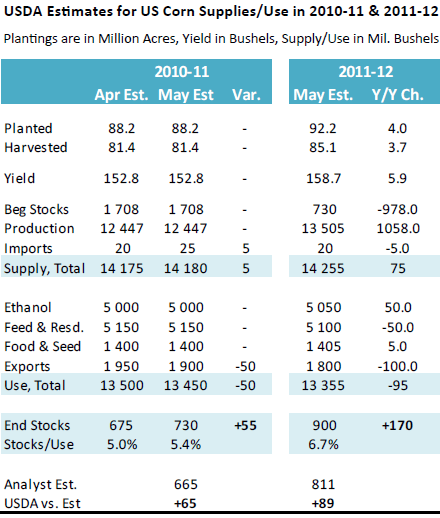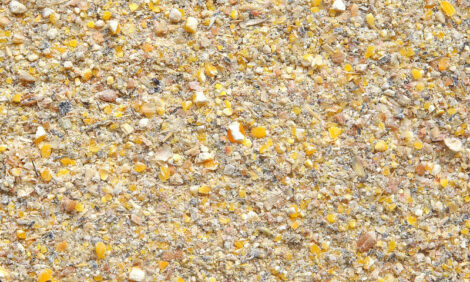



CME: Commodities' Sell-Off Impacts Corn Futures
US - Grain futures were sharply lower on Wednesday (11 May), in part due to USDA corn production estimates that were higher than private analysts had expected, write Steve Meyer and Len Steiner.In the authors' view, however, the broad sell-off in commodities had a much bigger impact on corn futures on 11 May. Considering overnight trading, crude oil prices are now almost $20/barrel lower than they were at the beginning of the month, copper prices are back to where they were in December and the US dollar has firmed up as investors dump riskier assets and park their money in US bonds.
In the current market, volatility is par for the course and it is important to continue to focus on fundamentals, i.e. measures of supply/demand that anchor price expectations. For livestock producers, packers and end users, the outlook for corn prices is of paramount importance since it will remain a critical driver of livestock and meat prices in the coming years. What did the much anticipated USDA Supply/Demand reveal in this regard?
USDA currently expects corn ending stocks for 2010/11 to be about 55 million bushels higher than the previous estimate. The increase reflected lower export estimates and USDA analysts did not change either ethanol or feed use. The 1 March stocks report showed much higher rates of feed utilization than USDA expected and there is plenty of uncertainty about what the 1 June stocks report will show. Consider that the USDA corn feed use estimate for 2010-11 is just 10 million bushels (0.2 per cent) higher than in 2009-10. However, red meat and poultry estimates for the same period reflect much higher production levels.

Based on the WASDE actual and estimated production numbers, we calculate that for the period September 2009 to August 2010, total US red meat and poultry production was 90.8 billion pounds. This compares to 93.4 billion pounds that is expected to be produced during September 2010 to August 2011. These numbers are approximate since the USDA forecasts are quarterly but they broadly reflect the expectation that overall red meat and poultry production in September 2010 to August 2011 period will be about 2.8 per cent higher than the previous year while at the same time using about the same amount of corn feed. The use of other feeds, primarily DDGSs likely has replaced some corn in livestock and poultry diets.
Work done at Iowa State indicates DDGs will replace about 50 million bushels of corn compared to 2009-10. That kind of displacement does not explain all of the expected rise in meat production. USDA argues more wheat will be used for feed in June to August. However, SRW wheat prices are currently about 78 cents over corn prices, which makes it quite a bit more expensive to use as feed now than was the case in April. While supplies of SRW wheat are much higher than a year ago, prices remain firm given tight supplies of other wheat and high prices in international markets. As for 2011-12 the above table outlines the initial USDA estimates, based mostly on trend data for yields. Note that USDA expects feed use to continue to decline while exports are expected to drop sharply. They are both possible but will require a) higher prices to ration out demand; and b) increased supplies, including wheat, in the global market. Last fall, we started the season with 1.7 billion bushels of corn while this year we will start with 730 million bushels. There is no margin for error and, as a result, the market will remain on edge and prices will likely stay high.








